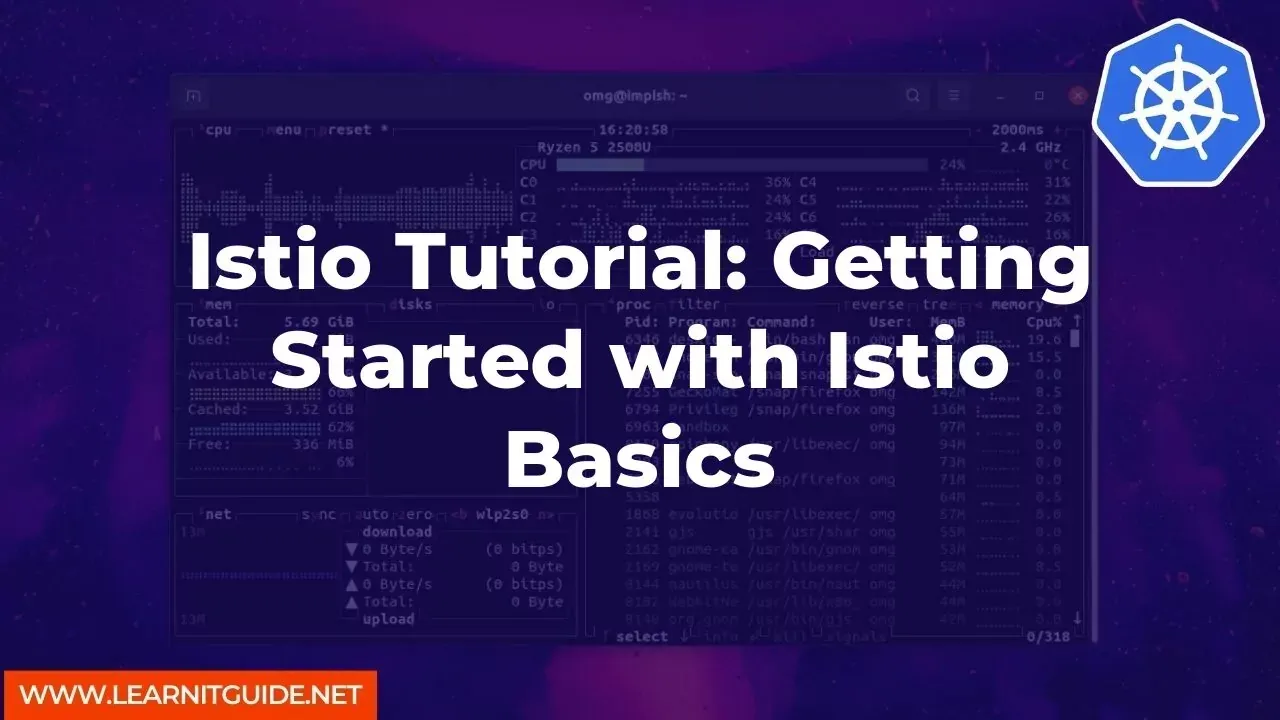Are you looking for a way to simplify your microservices infrastructure management? Look no further than Istio! Istio is an open-source service mesh that provides a simple and efficient way to manage traffic, secure your services, and much more. In this tutorial, we'll take a look at the basics of Istio and walk you through getting started with it.
Table of Contents
- What is Istio?
- Prerequisites
- Installing Istio
- Deploying Your First Application with Istio
- Traffic Management with Istio
- Conclusion
What is Istio?
Istio is an open-source service mesh that provides a simple and efficient way to manage microservices. It can help you control the traffic flow between your services, secure your services, and manage service-level agreements (SLAs). Istio consists of a control plane and a data plane. The control plane is responsible for configuration, policy enforcement, and telemetry collection, while the data plane is responsible for handling traffic between services.Prerequisites:
- Kubernetes cluster (version 1.16 or later)
- kubectl CLI
- Istioctl CLI
- A sample application to deploy
Installing Istio:
- Download the Istio installation files from the official website (https://istio.io/latest/docs/setup/getting-started/)
- Extract the downloaded files and navigate to the istio-<version>/bin directory
- Add the Istio bin directory to your system path by running the following command:
export PATH=$PWD:$PATH - Install Istio into your Kubernetes cluster by running the following command:
istioctl install --set profile=default - Verify that the Istio components have been installed correctly by running the following command:
kubectl get pods -n istio-system
Deploying Your First Application with Istio:
- Deploy your sample application to your Kubernetes cluster
- Apply the Istio sidecar injection to your application's namespace by running the following command:
kubectl label namespace <your-namespace> istio-injection=enabled - Create an Istio gateway to expose your application to the internet by running the following command:
kubectl apply -f <your-gateway-file.yaml> - Create an Istio virtual service to define how your application should handle incoming traffic by running the following command:
kubectl apply -f <your-virtual-service-file.yaml> - Verify that your application is accessible from the internet by running the following command:
curl http://<your-gateway-url>
Traffic Management with Istio:
Istio provides powerful traffic management features that allow you to control how traffic flows between your services. Here are a few examples of what you can do with Istio:- Traffic shifting: Gradually shift traffic from one version of your service to another
- Fault injection: Introduce faults into your services to test how they handle failures
- Circuit breaking: Stop sending traffic to a service that is not responding correctly
- Load balancing: Distribute traffic evenly across multiple instances of a service
In this tutorial, we've covered the basics of Istio and shown you how to get started with it. Istio provides a simple and efficient way to manage microservices, and its traffic management features can help you improve the reliability and performance of your services. We encourage you to explore Istio further and see what it can do for your microservices infrastructure.
Related Searches and Questions asked:
That's it for this post. Keep practicing and have fun. Leave your comments if any.








0 Comments